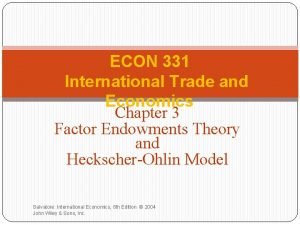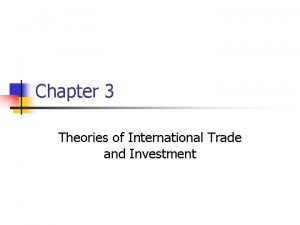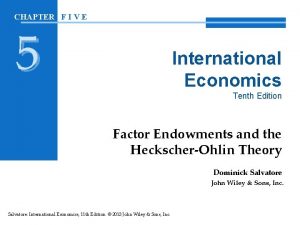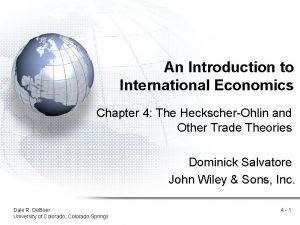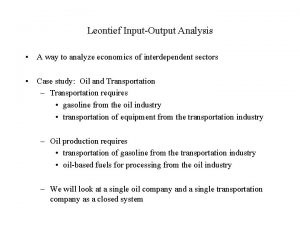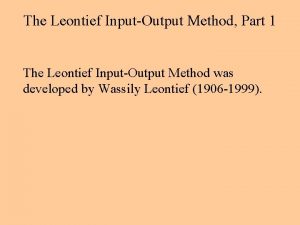Leontief InputOutput Analysis A way to analyze economics






- Slides: 6

Leontief Input-Output Analysis • A way to analyze economics of interdependent sectors • Case study: Oil and Transportation – Transportation requires • gasoline from the oil industry • transportation of equipment from the transportation industry – Oil production requires • transportation of gasoline from the transportation industry • oil-based fuels for processing from the oil industry – We will look at a single oil company and a single transportation company as a closed system

Some basic calculations Oil Industry Cost of producing $1 worth of gas: – $. 32 in oil costs – $. 12 in transportation costs Transportation industry Cost of producing $1 worth of transportation: – $. 50 in gas costs – $. 20 in transportation costs • Suppose that the demand from the outside sector of the economy (all consumers outside of oil and transportation) is: – $15 billion for oil – $1. 2 billion for transportation • If the companies produce exactly this amount, then the amount used in production is: –. 32(15) +. 50(1. 2) = $5. 4 billion in oil –. 12(15) +. 20(1. 2) = $2. 0 billion in transportation • This leaves only $9. 6 billion of oil and $1. 0 billion of transportation to meet the demand.

Leontief analysis allows us to calculate how much each company should produce to meet a given demand Let x = the total output from oil company Let y = the total output from transportation company The internal demand for each is the combined demand from the oil industry and from the transportation industry

Setting up the demand equations • The total output of each company will equal the sum of the internal and external demands: • Expressed as a matrix equation:

Solving the demand equations • Solve for X: • In our example:

The solution • Putting it all together: • In order to meet the demand the companies need to produce – $20. 8 billion of oil – $4. 4 billion of transportation


